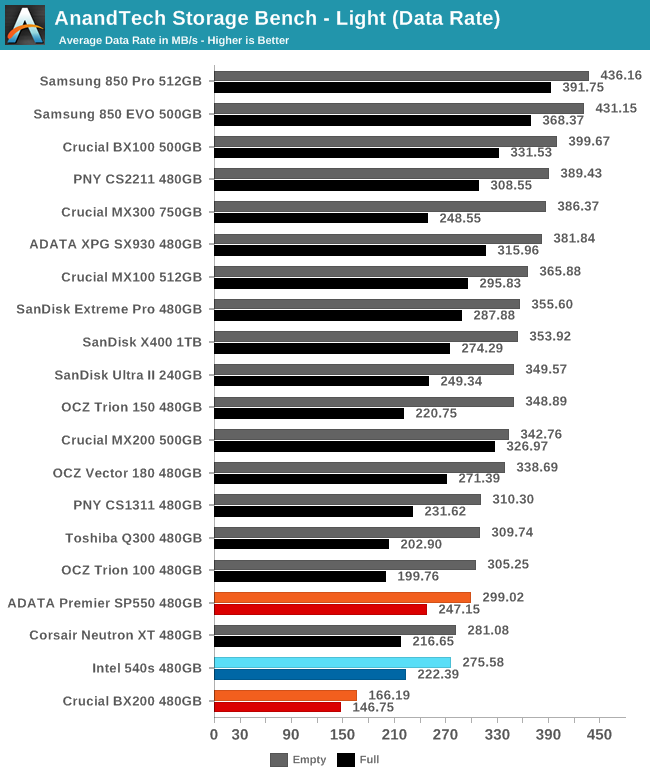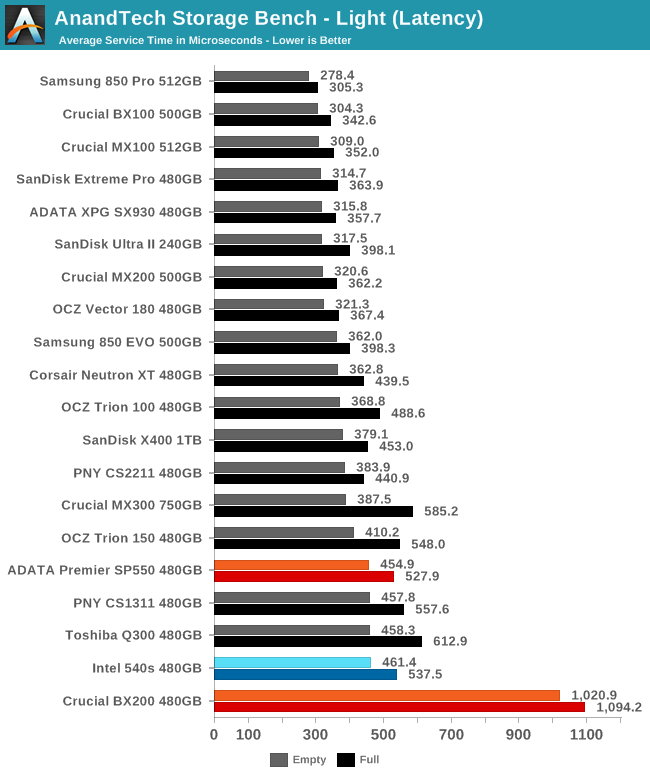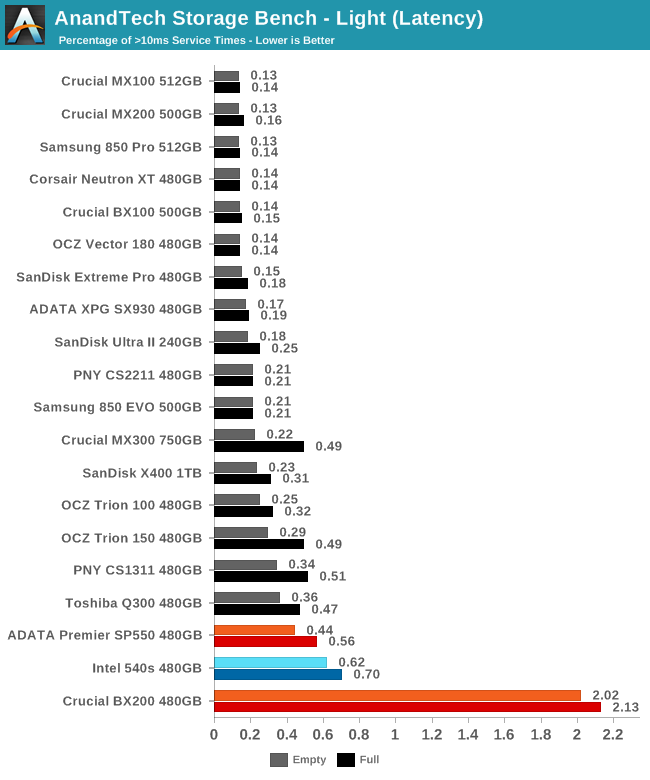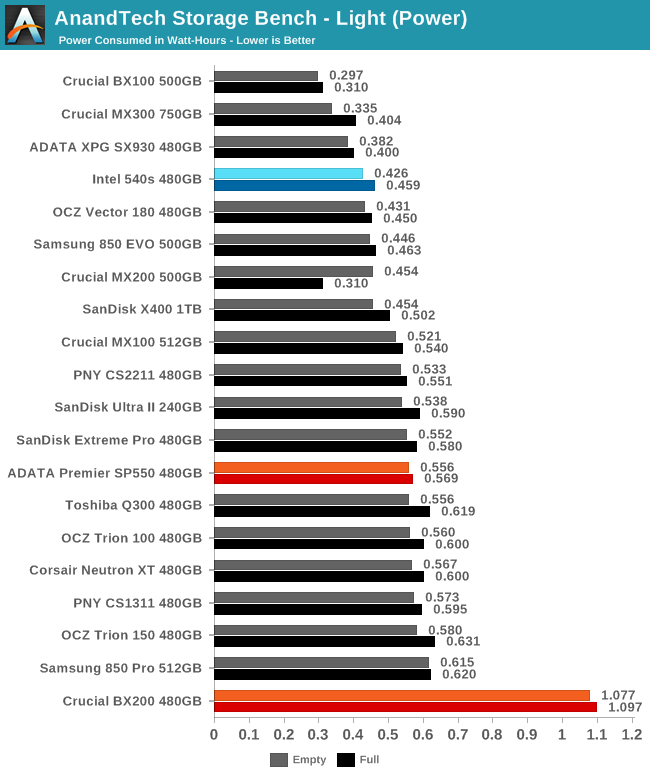The Intel SSD 540s (480GB) Review
by Billy Tallis on June 23, 2016 9:00 AM ESTAnandTech Storage Bench - Light
Our Light storage test has relatively more sequential accesses and lower queue depths than The Destroyer or the Heavy test, and it's by far the shortest test overall. It's based largely on applications that aren't highly dependent on storage performance, so this is a test more of application launch times and file load times. This test can be seen as the sum of all the little delays in daily usage, but with the idle times trimmed to 25ms it takes less than half an hour to run. Details of the Light test can be found here.

Both of the SM2256 drives were near the bottom of the ranking for average data rate on the Light test, and the Intel 540s doesn't improve any. The SP550 had previously performed relatively well for a TLC drive when full, but the latest Phison S10 TLC drives have mostly caught up.

The average service time of the Intel 540s is about the same as the SP550 and close to that of most Phison S10 TLC drives, but the Marvell-based TLC drives from SanDisk do significantly better.

The frequency of latency outliers for the Intel 540s is a little bit worse than the SP550, but all three Silicon Motion-based drives are at the bottom of the chart.

The power efficiency of the Intel 540s is quite good overall and well ahead of any other planar TLC drive.










77 Comments
View All Comments
Stuka87 - Thursday, June 23, 2016 - link
So disappointing. I bought up some Intel 740's because they were being discontinued. Glad I did now.prime2515103 - Thursday, June 23, 2016 - link
Did that BX200 really pull 45.69 watts in The Destroyer or is that a typo? How is that even possible?JoeMonco - Thursday, June 23, 2016 - link
The drive is broken garbage. That's how.Billy Tallis - Thursday, June 23, 2016 - link
That's Watt-hours. The Destroyer takes a typical SATA drive around 12 hours to run, so most drives are averaging a little over 1W.prime2515103 - Friday, June 24, 2016 - link
Oh I see... I'm going to have to read the testing methodology again, it's been awhile.cbjwthwm - Tuesday, June 28, 2016 - link
Did you do any re-testing of the drive with the firmware update 031C Intel released for it? It's too bad it can only be updated via ISO vs the Toolbox, and I found the ISO buggy (claimed it failed, but actually updated ok) which they have since pulled for "maintenance" ;)darkfalz - Friday, June 24, 2016 - link
Why does AT waste time reviewing a market segment where there is something like 5% noticeable difference across the board? And yet still haven't reviewed 10x0 series...vladx - Friday, June 24, 2016 - link
Guess the replacement for my Samsung 840 Evo is still going to be Sandisk X400. Intel's new SSD is a dissapointment.zodiacfml - Sunday, June 26, 2016 - link
Why? I guess, someone decided that the company should have a product at this price.fanofanand - Monday, June 27, 2016 - link
So Intel wants to charge the "Intel premium" while none of the components are Intel designed or made? Oh how the mighty have fallen. Between this drive, the $400 compute stick, and $1700 consumer CPUs, Intel is showing us just how out of touch they are with today's consumer markets.